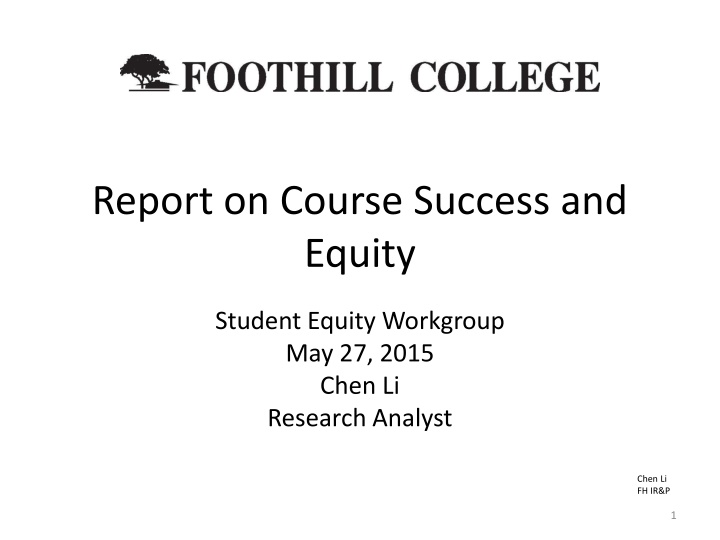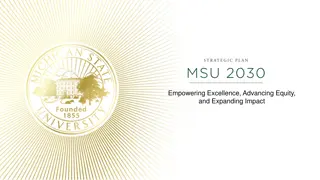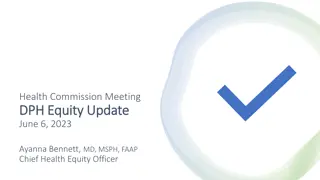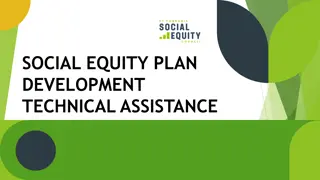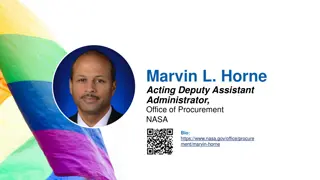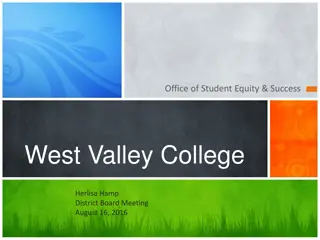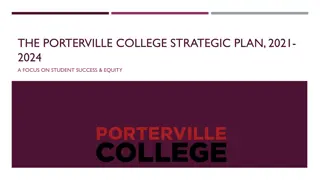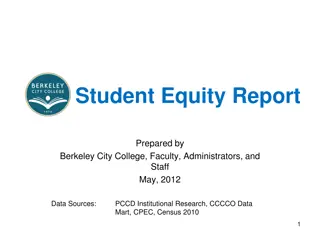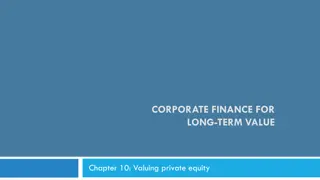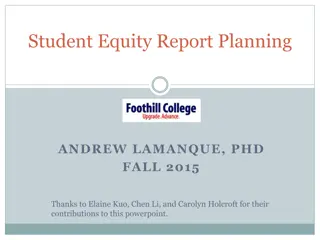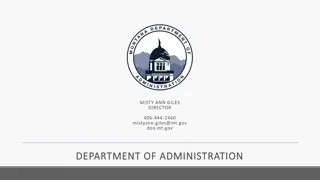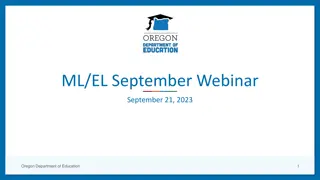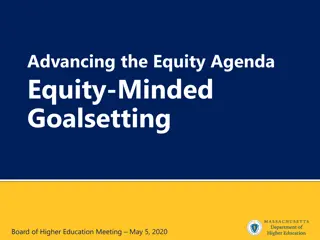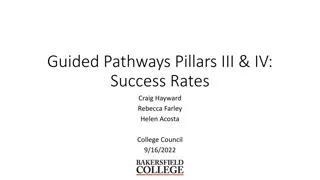Report on Course Success and Equity Analysis
The report conducts a detailed analysis of course success rates and equity measures among different student groups, highlighting factors affecting success in both online and face-to-face courses. It identifies disciplines where targeted students experience disproportionate impacts, providing insights for improving equity in educational outcomes. The findings shed light on disparities in success rates and offer implications for enhancing student achievement and equity in higher education.
Download Presentation

Please find below an Image/Link to download the presentation.
The content on the website is provided AS IS for your information and personal use only. It may not be sold, licensed, or shared on other websites without obtaining consent from the author.If you encounter any issues during the download, it is possible that the publisher has removed the file from their server.
You are allowed to download the files provided on this website for personal or commercial use, subject to the condition that they are used lawfully. All files are the property of their respective owners.
The content on the website is provided AS IS for your information and personal use only. It may not be sold, licensed, or shared on other websites without obtaining consent from the author.
E N D
Presentation Transcript
Report on Course Success and Equity Student Equity Workgroup May 27, 2015 Chen Li Research Analyst Chen Li FH IR&P 1
Access 2
Course Success Rates and Equity Measures Green vs. Yellow-Implications for Course Success and Equity 4
Course Completion/Course Success Overall Facts as of Fall 2014 College-Level Course Success Rate: 76% College-Level Course Success Rate for Fall 2013: 75% Internet Based: 70% vs. Face-to-Face: 79% No disproportionate impact by gender or age African American and Pacific Island: around 60%, indicating disproportionate impact. Hispanic Students: 69%, slightly below the reference group, but no longer a disproportionate impact No disproportionate impact by DSPS status or Veteran status Foster youth students: 59%, indicating a disproportionate impact 5
Disciplines that targeted students experience a disproportionate impact in Internet Based vs. Face-to-Face Disproportionate impact by program/discipline Due to different sizes of enrollment count, a convention is needed to determine whether a particular discipline is considered significant in terms of enrollment Proposed convention: 3% of total enrollment by method of instruction 8
Disciplines that targeted students experience a disproportionate impact in Internet Based Accounting, Biology, Kinesiology, Music Face-to-Face Biology, English, Mathematics African American (Internet Based: 19, Face-to-Face:21) Hispanic (Internet Based: 68, Face-to-Face: 165) Accounting, Anthropology, Child Development, English, History, Kinesiology, Music, Psychology, Sociology, Speech Communication English, History, Kinesiology, Music, Psychology, Speech Communication Biology, Chemistry, English, Mathematics, Psychology Pacific Islander (Internet Based: 3, Face-to-Face: 5) Anthropology, Chemistry, English, History, Mathematics 9
Course Success and Completion of English or Math Both English and Math are identified as courses that the targeted groups experience a disproportionate impact in. This signals a problem Almost all other classes build upon the foundational skills in English and Math classes A need to increase success rates for credit level English and Math classes for the targeted groups 10
Goals and Actions Increase success rates for online classes, embedded tutoring Individual survey/interview with students to identify what students need in order to succeed Literature review on successful teaching and learning practices Focus on disciplines/courses that the targeted students experience a disproportionate impact in Focus on Math/English for targeted groups 12
Thank you. 13
